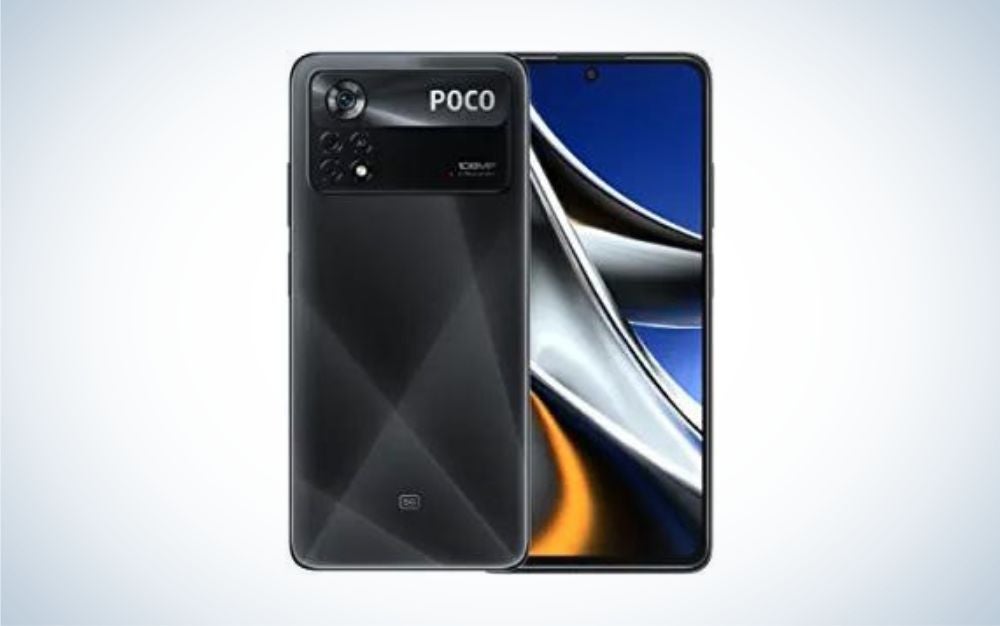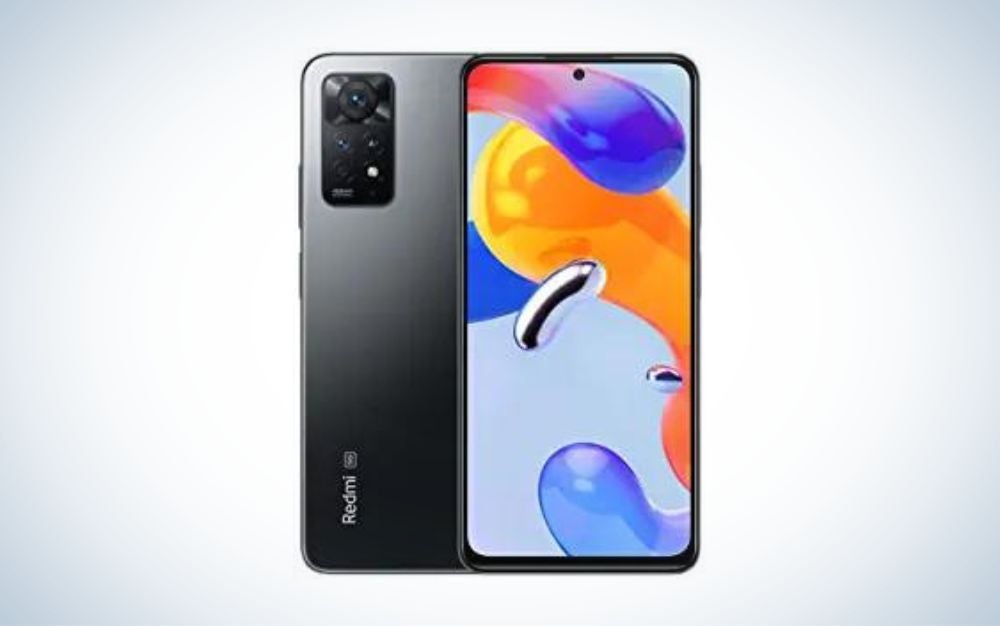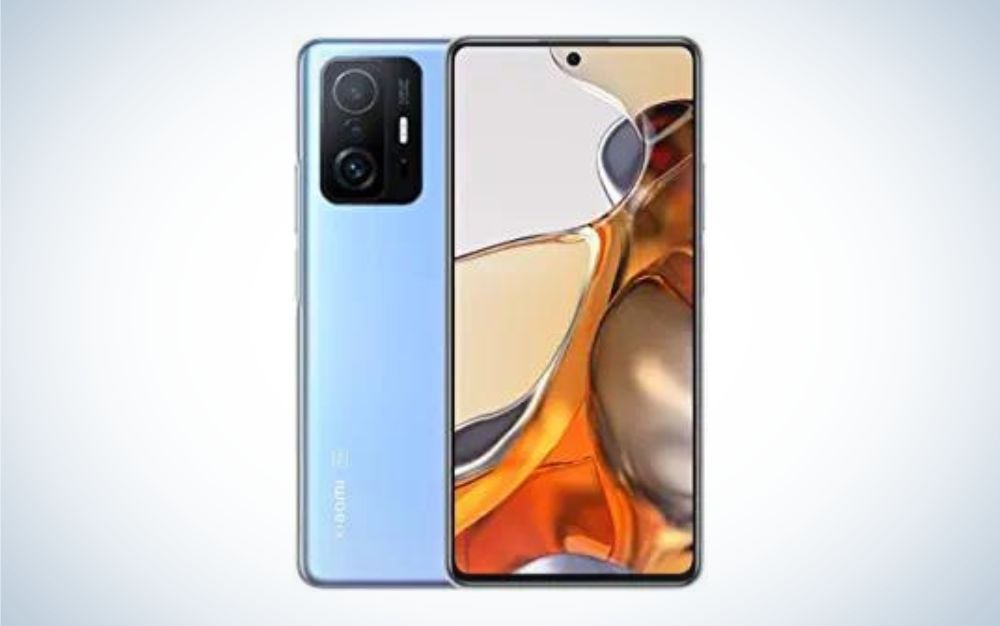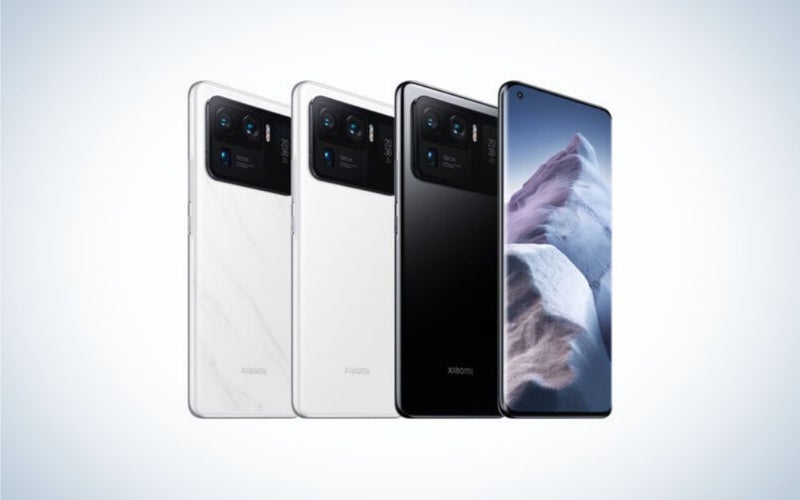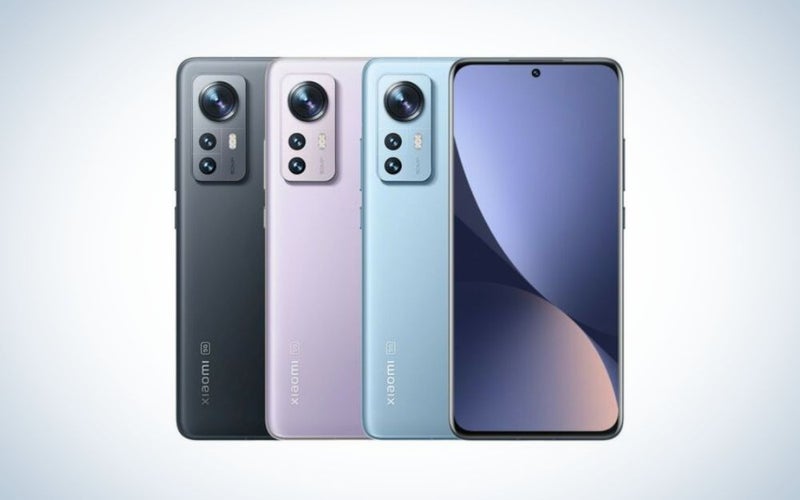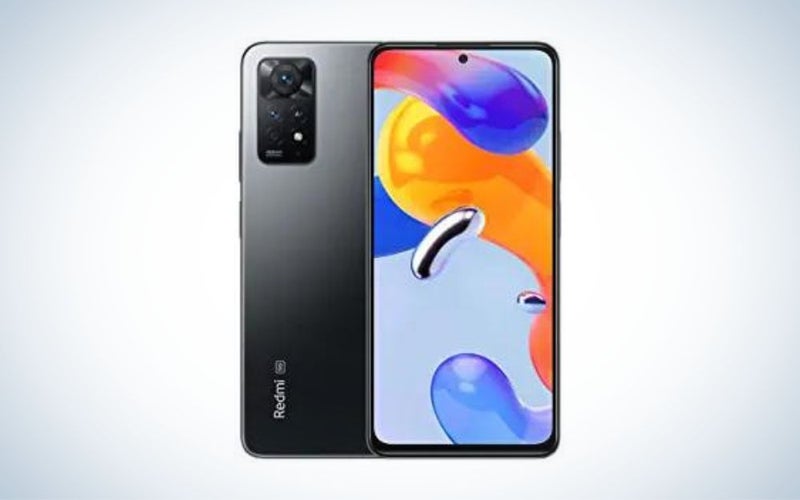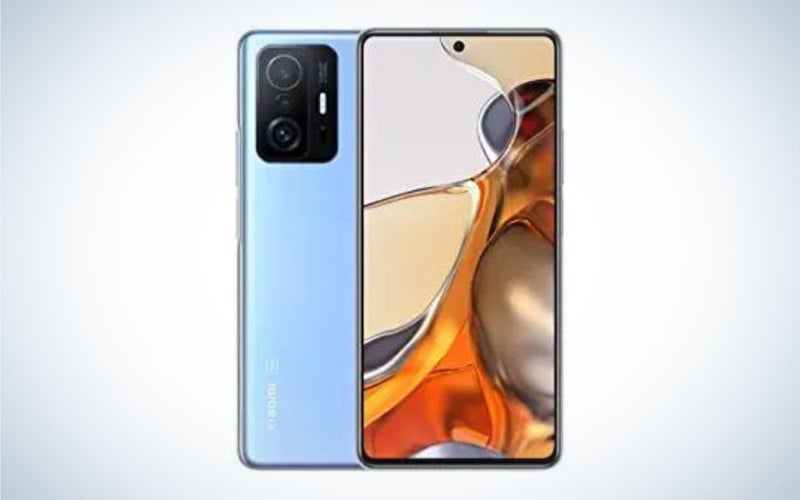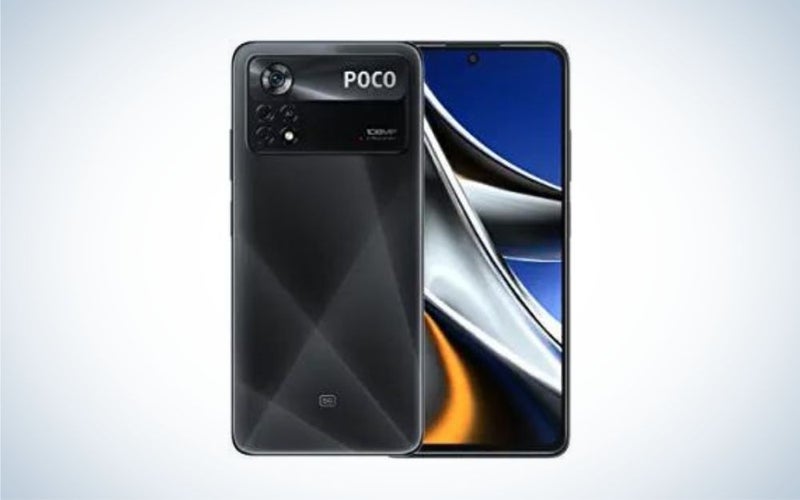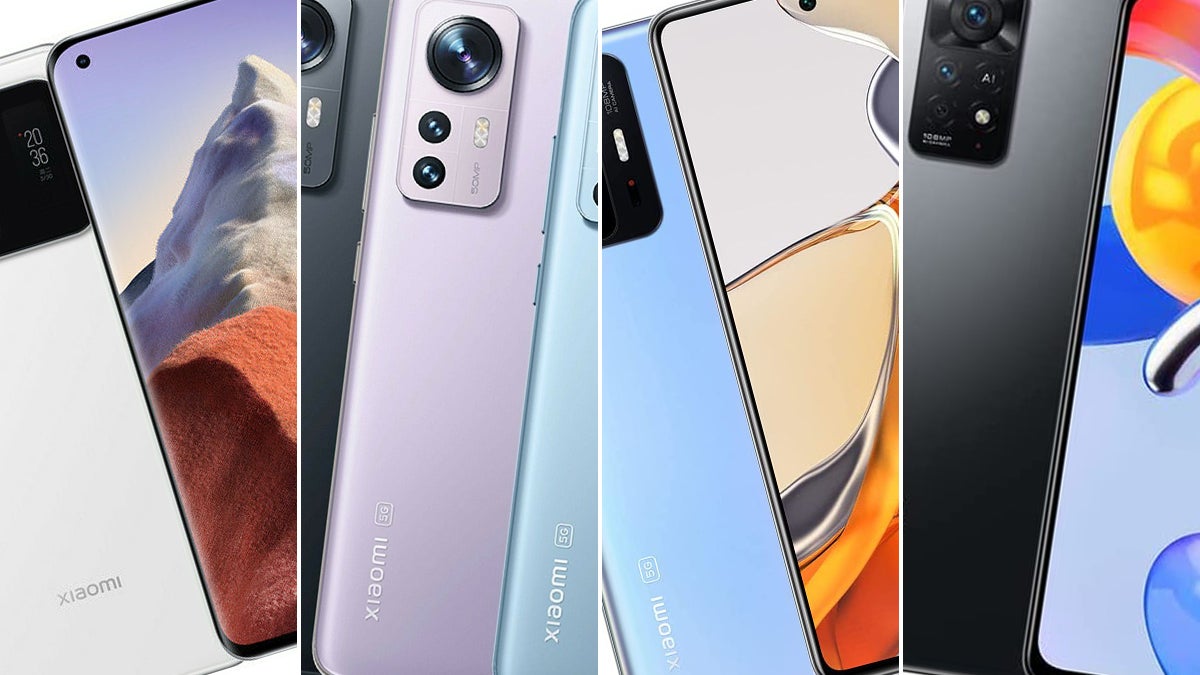
Chances are you might not have heard of Xiaomi phones (pronounced shao-mee, think “show me the money”!), which translates to “little rice.” And yet they are one of the biggest tech companies in the world, making everything from phones and fitness trackers to TVs and air purifiers. They are fast becoming a big household name outside of Asia and are known for their innovative and smart tech approach. Their phones are no different as they are packed with high-tech features while being budget-friendly, giving you lots of bang for your buck.
From a design perspective, Xiaomi phones are visually stunning. These days, most phones will have multiple rear cameras, and making a four-camera setup look minimalist is hard. However, the designers at Xiaomi nail it more often than not, with the best Xiaomi phones giving you a beautifully inspiring phone that you cannot resist showing off.
- Best overall: Xiaomi Mi 11 Ultra
- Best camera: Xiaomi 12 Pro
- Best Redmi: Xiaomi Redmi Note 11 Pro
- Best mid range: Xiaomi 11T Pro
- Most affordable: Xiaomi Poco X4 Pro 5G
Things to consider before buying a Xiaomi phone
There are many things to consider with phones in general. However, some specific factors make all the difference between a mid-range phone and a premium one. The features below are some of the most important things to look at when choosing the right phone for your needs.
Processor
The first thing to consider is the processor. The processor is essentially the brain of the phone or any electronic device, like a computer. It essentially gives instructions to the rest of your phone, and the faster, more up-to-date processor you have, the quicker your phone will be. Speed is especially important for those who like playing games or watching media on their phone.
RAM
RAM, or Random Access Memory, is the short-term memory bank for your phone. The more RAM you have, the more data it can handle and the faster you’ll be able to switch between applications. Most phones will have between two and six gigabytes of RAM.
RAM and the processor work hand in hand. If you have too much RAM, your processor may not be able to handle it. Think of it as a powerful car engine in a car that is rusty and breaking down. Yes, you have a fast engine, but it won’t go very far if the car can’t handle the power.
Camera
The introduction of cameras on phones is one of the most significant society-changing moments in the 21st century. It’s resulted in the rise of companies like Instagram, Snapchat, and Tik Tok and made photography more accessible.
Nowadays, most phones have multiple rear and front cameras, which limits the space on the phone for other tech and increases the manufacturing cost. However, numerous cameras on a single device offer better quality and versatility. For example, a single camera that has to do it all will not be as good as having dedicated telephoto and wide-angle cameras. A single camera may also require you to rely on digital zoom, which significantly degrades image quality.
If you want to use your phone as a camera replacement, look for one with multiple cameras with different angles of view, ideally including telephoto and wide-angle. You’ll also want a high megapixel count for better quality.
Battery
Gone are the days when phones could last weeks on a single charge. Nowadays, you’re lucky to get through an entire day without needing to charge your phone. Batteries on phones are not all created equal, and paying attention to battery specs will only be beneficial.
Battery capacity is measured in milliampere hour (mAh). The higher the number, the longer the battery life. For example, a 3000 mAH battery can last around 10 hours. However, bear in mind that the more you use the phone, the faster it will drain. In addition, a better processor and operating system will help reduce battery usage.
While this is an important aspect of a phone, it may not necessarily be the end of the world. You can always carry a power bank for portable charging when you aren’t near an outlet should you want to ensure you always have power. Sure, it’s not the most convenient, but it does mean that a small battery in a phone isn’t that bad.
Storage
Obviously, the more storage a phone has, the more you can store. But many manufacturers are limiting the amount of storage you get, partly due to, ironically, physical space on the phone. They also may be trying to get you to buy their cloud storage services.
The larger the storage a phone has, the more it will cost, so you need to consider what you will use it for. Storage space isn’t as crucial if you primarily use your phone for calls and web browsing. But if you use it for work, take loads of photos, or plan on downloading many apps and games, then you’ll need more storage. 64GB is usually plenty for most people, but if you have more, you’ll have more freedom to use your phone as needed without restrictions. Furthermore, some manufacturers will give you more RAM when buying a phone with more storage, so you’ll also have a faster device.
Screen
We’ve seen phones as large as bricks during the 90s and as small as a bank card in the 00s. There is a fine line these days, especially as smartphones require more power for the technology they hold. To keep phones thinner, companies make the screen larger, giving you more screen space. Most Xiaomi phones are approximately 6.5 inches on average, which is a decent size to both hold in your hand and carry in your pockets.
When considering screen quality, refresh rate is one aspect to pay attention to. A higher refresh rate will give you smoother and clearer images, which is helpful if you intend to use your phone to watch media or play games. In addition, the more premium phones allow you to adjust it to save battery life or suit your eyesight better.
Here are our picks for the best Xiaomi phones for 2022
Best overall: Xiaomi Mi 11 Ultra
Ebay
Why it made the cut: It may have slightly older hardware, but the quality of this phone is still incredible, with usability at the forefront of design.
Key features:
- Processor: Snapdragon® 888
- RAM: 12GB
- Screen: 6.8-inch WQHD+ AMOLED DotDisplay
- Camera: Rear: 50MP wide-angle, 48MP ultra-wide-angle, 48MP telephoto | Front: 20MP
- Storage: 256GB
- Battery: 5000 mAh
Pros
- Large storage capacity
- Lots of RAM
- Great camera options
- IP68 waterproofing
Cons
- Front selfie camera is not central
- Rear camera arrangement sticks out substantially
Released in 2021, the Xiaomi Mi 11 Ultra was the predecessor to the 12 Pro, Xiaomi’s current flagship phone. The designers of the Mi 11 Ultra placed a lot of thought and attention on how the end user would use their phones. For example, the Mi 11 Ultra has a small display at the back near the cameras. It provides details such as time, battery life, and notifications. It is handy if you don’t want a 6.8-inch screen showing you everything or causing a bright light at night.
You can also use the rear screen to help with taking selfies if you want to take advantage of the much higher quality rear cameras or the ultra-wide angle for group photos. However, the downside to this is that it’s not the most stylish looking back of the phone, as it takes up a quarter of the back and sticks out more than others. It is also a touch screen prone to getting accidentally tapped, which is less than ideal.
The Xiaomi Mi 11 Ultra has three cameras: a 50MP wide-angle, 48MP ultra-wide-angle (128° FOV), and 48MP telephoto lens. The 50MP wide-angle has an aperture of f/1.95, making it better for low light conditions. Moreover, combined with Xiaomi’s Ultra Night Photo mode, you can take photos in near darkness. The 48MP telephoto camera has 5x optical zoom and up to 120x digital zoom. Digital zoom usually results in lower quality, but with Xiaomi’s AI, 48MP, and the 1/2.0-inch sensor, the quality is still excellent in the right conditions. Furthermore, Xiaomi employs a 64-point laser focus, which means it can track subjects and keep them in sharp focus.
The phone has an older processor, the Snapdragon® 888, but it is still one of Qualcomm’s best processors ever. Coupled with the 12GB RAM, the Mi 11 Ultra is a fantastically fast phone. There is also 256GB of storage, giving you more space for your photos and videos without needing to delete your media or save them onto cloud storage.
Besides the look of the rear camera setup, the Mi 11 Ultra is a beautiful phone. It looks and feels like a premium phone. However, the selfie camera is on the corner of the screen. This placement allows you to have more screen space, but some may find it not ideal when taking a selfie.
Best camera: Xiaomi 12 Pro
Ebay
Why it made the cut: Xiaomi’s current flagship phone, released in April 2022, is a fantastic phone with a three rear camera arrangement to cover all your photographic needs. It comes with Qualcomm’s latest and most powerful processor, which is 20% faster than its predecessor.
Key features:
- Processor: Snapdragon® 8 Gen 1
- RAM: 8GB or 12GB
- Screen: 6.73-inch AMOLED DotDisplay
- Camera: Rear: 50MP wide-angle, 50MP ultra-wide-angle, 50MP telephoto | Front: 32MP
- Storage: 128GB or 256GB
- Battery: 4600mAh
Pros
- Stylish design
- Fantastic camera set up
- Fast charging
Cons
- Not IP rated
The Xiaomi 12 Pro is the Chinese manufacturer’s current flagship phone and is packed with amazing features, such as an in-screen fingerprint scanner and AI face unlock for extra security. Inside the box is a 120W charger, which allows you to charge the phone very quickly, though, with its 4600mAh battery, you can use the phone for longer. Xiaomi’s AdaptiveCharge technology learns and adapts from your daily charging and sleeping routines. It stops charging at 80% to prolong the battery’s life and then slowly charges so that it will be fully charged when you wake up.
The three-camera setup has an impressive 50MP wide-angle lens, 50MP ultra-wide-angle lens, and a 50MP telephoto lens. The front camera is just as good at 32MP and provides clear selfies. There are also several modes that you can use, such as Ultra Night Photo and Distortion Mode, to give you more flexibility and creative control. When using the phone in long exposure mode with a phone tripod, the night and astrophotos are amazingly high quality and beautiful.
The design is reminiscent of older Samsung models, such as the Samsung Galaxy S7, but still looks stunning. Phone manufacturers have begun adding more cameras on the back of the phone to give you more flexibility and quality, but with that comes the issue of how it looks. Fortunately, the Xiaomi 12 Pro has balanced looks and functionality with the main camera at the top and the two other cameras just below it.
The front camera is not obtrusive, making more of the 6.67-inch screen available for use. The screen itself is an AMOLED DotDisplay with beautiful colors. You can adjust the refresh rate from as low as 1Hz to 120Hz, which allows you to save power and help with different eye sights or conditions. In addition, Xiaomi worked with Harman Kardon to give you fantastic sound quality. It also comes with Dolby Atmos, which means that your movies and games will have crystal clear sound.
One disappointing aspect, especially for a premium flagship phone, is that it is not IP rated. This means that, while it does have some protection, it is not fully protected when using it in the rain or if you drop it in the toilet.
Best Redmi: Xiaomi Redmi Note 11 Pro 5G
Xiaomi
Why it made the cut: Xiaomi built its Redmi Note line with business users in mind. With the Note 11 Pro’s expandable storage and 3.5mm headphone jack, it is very well suited to the modern world of Zoom calls.
Key features:
- Processor: Snapdragon® 695
- RAM: 6GB or 8GB
- Screen size: 6.67-inch FHD+ AMOLED DotDisplay
- Camera: Rear: 108MP wide-angle, 8MP ultra-wide-angle, 2MP macro | Front: 16MP
- Storage: 64GB or 128GB (expandable up to 1TB)
- Battery: 5000 mAH
Pros
- 5G ready
- Expandable storage
- 3.5mm headphone jack
- Stylish phone
Cons
- Not the best camera
The Redmi Note 11 Pro 5G is a gorgeous phone. It comes in Polar White, Graphite Gray, and Atlantic Blue, with the latter having a wavy water effect that is so beautiful that it would be a shame to cover it up with a phone case. The 6.67-inch full HD AMOLED display renders colors beautifully and comes with a 120Hz refresh rate, making things very clear. It’s 5G ready, so you can hit the ground running with the fastest possible connection. In addition, the 5000mAh battery means more prolonged use and less need to charge your phone. A 0% to 100% charge takes approximately 42 minutes, according to Xiaomi, which means if your battery runs out, you can be on the move again quickly.
64GB and 128GB are not the most extensive amounts of storage possible. Although that is more than enough for most users, it is possible to expand the storage to 1TB. That means you can store more work, personal documents, and media on your phone without needing to free up space constantly.
However, arguably the best feature is the inclusion of a 3.5mm headphone jack. I use wireless headphones, but I miss the option of a headphone jack, especially when my headphones run out of battery. Including this near-extinct feature is very welcome for those who tend to forget to charge their headphones or still prefer old-school connections. It is also helpful if you are on a zoom call and need to plug into a wired headphone for better clarity.
The most disappointing aspect is that the cameras aren’t the best. They’re still good, but an 8MP ultra-wide-angle is less than some of Xiaomi’s phones and many of its competitors. It would have been nicer to see a 50MP wide-angle and a 50MP ultra-wide-angle instead of the 108MP main camera. That being said, the cameras are still great and have amazing low-light capabilities, thanks to the phone’s AI.
Best mid range: Xiaomi 11T Pro
Xiaomi
Why it made the cut: The Xiaomi 11T Pro is a mid-range version of the Mi 11 former flagship phone. The specs aren’t quite as good as the flagship phone, but it is a fantastic phone that punches far above its weight and gives you great value for money.
Key features:
- Processor: Qualcomm®️ Snapdragon™️ 888
- RAM: 8GB or 12GB
- Screen size: 6.67-inch AMOLED Display
- Camera: Rear: 108MP main camera, 8MP ultra-wide-angle lens, 5MP telemacro lens | Front: 16MP
- Storage: 128GB
- Battery: 4500mAh
Pros
- 120W charging via dual-cell battery
- Fast refresh rate
- 5G ready
Cons
- No wireless charging
Xiaomi’s website focuses significantly on the Xiaomi Hypercharge’s battery charging capabilities, and it’s easy to see why. With 120W capable charging, the phone can charge from 0% to 100% in only 17 mins. It has two battery cells inside the phone, which means it can charge the phone much faster than a single cell as each cell is smaller and therefore takes less time to charge up individually.
The screen is a 6.67-inch AMOLED display that renders clearly and smoothly with a 120Hz refresh rate making it an excellent phone for everything from movies and gaming to emails and e-books. The Harman Kardon speakers are incredibly good and sound sensational. The collaboration with Dolby Atmos also gives you clear, immersive sounds.
This Xiaomi phone isn’t that bad looking, but it’s hardly the most inspiring phone. Not exactly the end of the world, especially if you use a case, but some people want a decent-looking phone. One thing lacking from this phone is wireless charging. As with the phone’s design, it’s not the worst thing to miss. However, it is convenient when you are at a desk, so it would have been nice to have this addition.
Most affordable: Xiaomi POCOX4 Pro 5G
Xiaomi
Why it made the cut: These days, many mid-range and premium phones usually cost as much as a small laptop, but the POCO X4 Pro is much more affordable while retaining premium features, such as a 120Hz refresh rate and 67W fast charging.
Key features:
- Processor: Snapdragon® 695
- RAM: 6GB or 8GB
- Screen size: 6.67-inch FHD+ AMOLED DotDisplay
- Camera: Rear: 108MP main camera, 8MP ultra-wide-angle, 2MP macro | Front: 16MP
- Storage: 128GB or 256GB
- Battery: 5000 mAh
Pros
- Stunning design
- 5G ready
- Affordable price
- Large battery capacity
Cons
- Macro lens is not really needed
On paper, the POCO X4 Pro has some very premium features but at a very affordable price. For example, the 6.67-inch FHD+ AMOLED DotDisplay with a 120Hz refresh rate is a feature usually reserved for more expensive, high-end phones. And the 5000mAh battery with 67W fast charging is very welcome and surprising for a phone at such a low price. It is also 5G ready, giving you a future-proof phone.
The phone itself, like many Xiaomi phones, is beautifully designed. It comes in three colors, Laser Blue, Laser Black, and yellow. Each is stunning to look at with lines, like lasers, on the back of the phone. While the camera arrangement at the back may put people off, it is nonetheless a very well-designed phone.
Storage capacity is very generous, with 128GB for the 6GB RAM option and 256GB for the 8GB RAM option. The larger RAM is worth the upgrade when paired with the Snapdragon® 695’s octa-core processor, which provides eight cores or processing units, making the POCO X4 Pro an exceptionally fast phone, given the price.
Users will get a decent 108MP f/1.9 main camera on the rear of the phone and an 8MP ultra-wide-angle. While the main camera and ultra-wide angle camera are useful for everyday situations, such as group photos, the same cannot be said for the 2MP macro camera. It would have been better to have a telephoto camera; the macro will likely not be used by anyone other than photographers.
FAQs
Is Xiaomi a good brand to buy?
Yes, Xiaomi is a good brand to buy. They are a great, low-cost alternative to the more premium brands like Apple, Google, and Samsung. They may not have some of the features these brands offer, such as high-quality cameras or weather sealing, but they are a good alternative if you do not need or want those features and don’t want to spend as much on a phone.
Are Xiaomi phones better than Samsung phones?
Whether Xiaomi phones are better than Samsung phones depends on the particular model and your needs. The lower and mid-tier phones will likely be similar as they will share comparable features and hardware. However, the Samsung premium range of phones are of excellent quality, especially the cameras. These will come at a significant cost to your bank account, though, so if you are on a tight budget, Xiaomi might be the better option.
Do Xiaomi phones have Google apps?
Yes, Xiaomi phones do have Google apps. Xiaomi phones will either use Android One or MIUI (pronounced mee-you-eye), which is their customized version of Android. This is standard for all brands, besides Google (where you get the full Android experience) and Apple (which runs on iOS), as they like to make the software custom for their phones. While you can use Google apps, you will need to download them as they don’t come preloaded.
Is Mi or Redmi better?
When looking strictly at specs, Mi phones are better. Mi smartphones will have faster processors and higher-end features. These features and better specs make them more expensive, though. Redmi phones, on the other hand, have less-expensive components, making them more affordable than options from the Mi lineup.
Final thoughts on Xiaomi phones
The Xiaomi team has clearly thought about how the end user will use its phones. The specs and tech inside each phone, particularly the flagship phones, are fantastic and take the fight to the market leaders, such as Samsung and Apple, at a portion of the cost. So if you are looking for a phone with high-end specs, a beautiful design, and fantastic features but are on a budget, the Xiaomi phones are the right way to go.
Methodology: How we picked the best Xiaomi phones
The team at PopPhoto has decades of experience in a variety of photographic and technological situations. We have thoroughly researched the Xiaomi phones and considered what most users would want in their phones. Features such as the cameras, built-in storage, and processing speed were deemed most important. We also looked at the sound quality, the ability to expand storage, display quality, and any unique features. Finally, though Xiaomi phones are already budget-friendly, we aimed to choose products at different price points to suit various needs.
The post Best Xiaomi phones for 2022 appeared first on Popular Photography.
